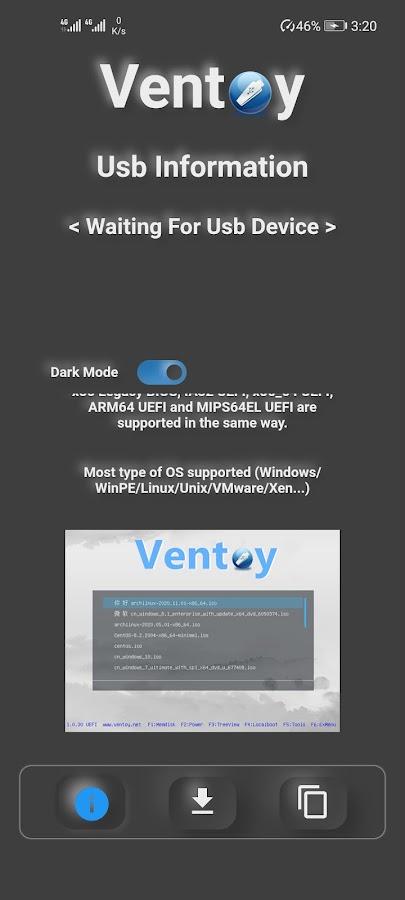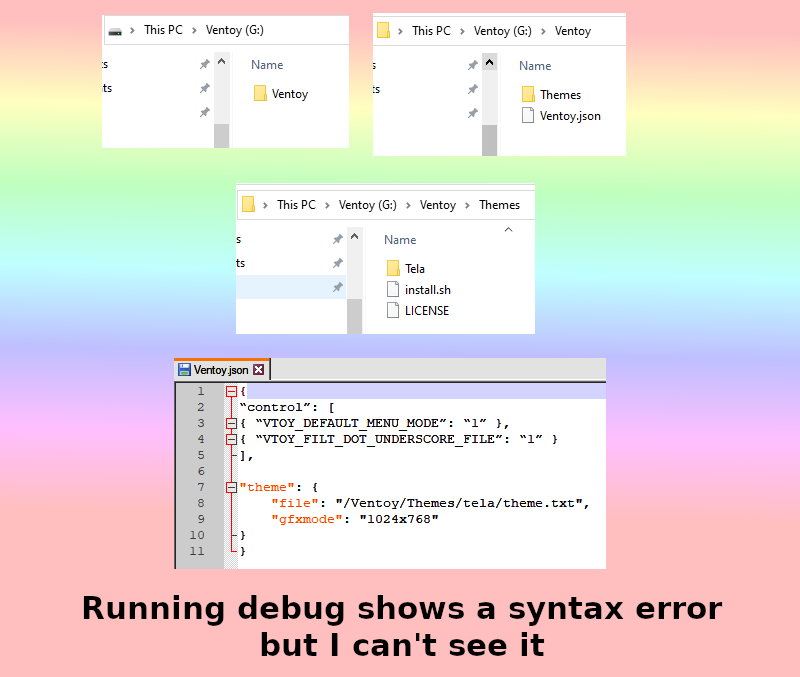
- #VENTOY TUTORIAL INSTALL#
- #VENTOY TUTORIAL UPDATE#
- #VENTOY TUTORIAL UPGRADE#
- #VENTOY TUTORIAL PORTABLE#
you need to create USB installation media from bootable ISOs (Windows, Linux, UEFI, etc. From within Windows, press and hold the Shift key and click the "Restart" option in the Start menu or on the sign-in screen. Once Rufus is downloaded, launch the program and select the Arch Linux ISO file. The Microsoft or Surface logo appears on your screen.

For this, we recommend creating a bootable Ubuntu 22. Linux Live USB Creator’s only positive thing is its attractive user interface. Note: If the USB drive does not boot properly using the default ISO Image mode, DD Image mode should be used instead. ) Despite its small size, Rufus provides everything you need! A non exhaustive list of Rufus supported ISOs is also provided at … To boot to Legacy devices or systems configured with Microsoft Windows 7 (32-bit or 64-bit) or Windows 10: 1) Restart the PC and press F1 to enter Setup. Select the proper USB drive to format and extract Linux to, and click Create. Try selecting the other USB option (if there is one) in the BIOS Boot priority menu. Next step would be to completely turn off 'Secure Boot' via the boot menus 4.
#VENTOY TUTORIAL INSTALL#
Install Windows 10 from USB (make a Windows Bootable USB), Run Live Linux, perform system diagnostic tests, Scan for viruses, backup hard drives, and more. Use the sidebar to jump directly to the section that discusses this for your OS. 04 we had a discontinued project named Wubi. make sure that the PC is booting in UEFI compatibility mode.
#VENTOY TUTORIAL UPGRADE#
Overview With a bootable Ubuntu USB stick, you can: Install or upgrade Ubuntu Test out the Ubuntu desktop … From there, you can boot up a Linux system on any computer that supports booting from USB media. Unetbootin – is an open-source tool for creating bootable Live USB drives for Ubuntu, Fedora, and other Linux distributions. Now use the rm command to delete the file. Select USB Drive from the Type drop-down.
#VENTOY TUTORIAL UPDATE#
If your PC's BIOS does not seem to support this, check if there is an update available.

You do not just save the ISO to a flash drive, you have to use an installer. Find the downloaded image, right-click on it, go to Open With, and click Disk Image Writer. To create a bootable DVD, you need to burn the ISO as an "image" to the DVD. After that, just click Start and let the program create the bootable USB. To become a root user you can use the command 'sudo -s' and then 'chmod a+x filename' to change the permission of the file. Then, make sure that all other USB devices are removed (e. Below are listed three free Windows programs that will enable you to do that. Download and install Rufus for your operating system. Please state the make and model number of your machine or its specification Please tell us which distribution and build number you are having problems with [example Ubuntu 22. 04 LTS and newer versions (but not in older 2. 04] Explain what your problem is and what … I created the boot usb in my macbook ( using unetbootin) and wanted to install Linux ( tried both Linux mint and Ubuntu) on another PC. Finalize the process by clicking Flash and wait for the process to complete.
#VENTOY TUTORIAL PORTABLE#
If you’re looking for a portable Debian-based Linux distro that runs great from a USB drive, then Slax is a great option. Select your ISO from the small CD Drive Icon under format options. 04 form USB includes four simple steps: First, switch OFF your PC. Here’s how: Press F10 and ESC (or Delete) keys when booting your computer to open the BIOS Setup utility. With ventoy, you don't need to format the disk over and over, you just need to copy the ISO/WIM/IMG/VHD (x)/EFI files to the USB drive and boot them directly. Determine the Hard Drive Partition's Path. When done copying, right click on the DVD drive and select Eject. Install the ddrescue command line tool which will be used in the next step to create the bootable RHEL 8 USB flash drive: REDHAT/CENTOS # yum install ddrescue … Get into you UEFI/BIOS pressing Dell key as soon a MSi logo appears>Advanced>USB Configuration and make sure Legacy USB Support is enable.


 0 kommentar(er)
0 kommentar(er)
